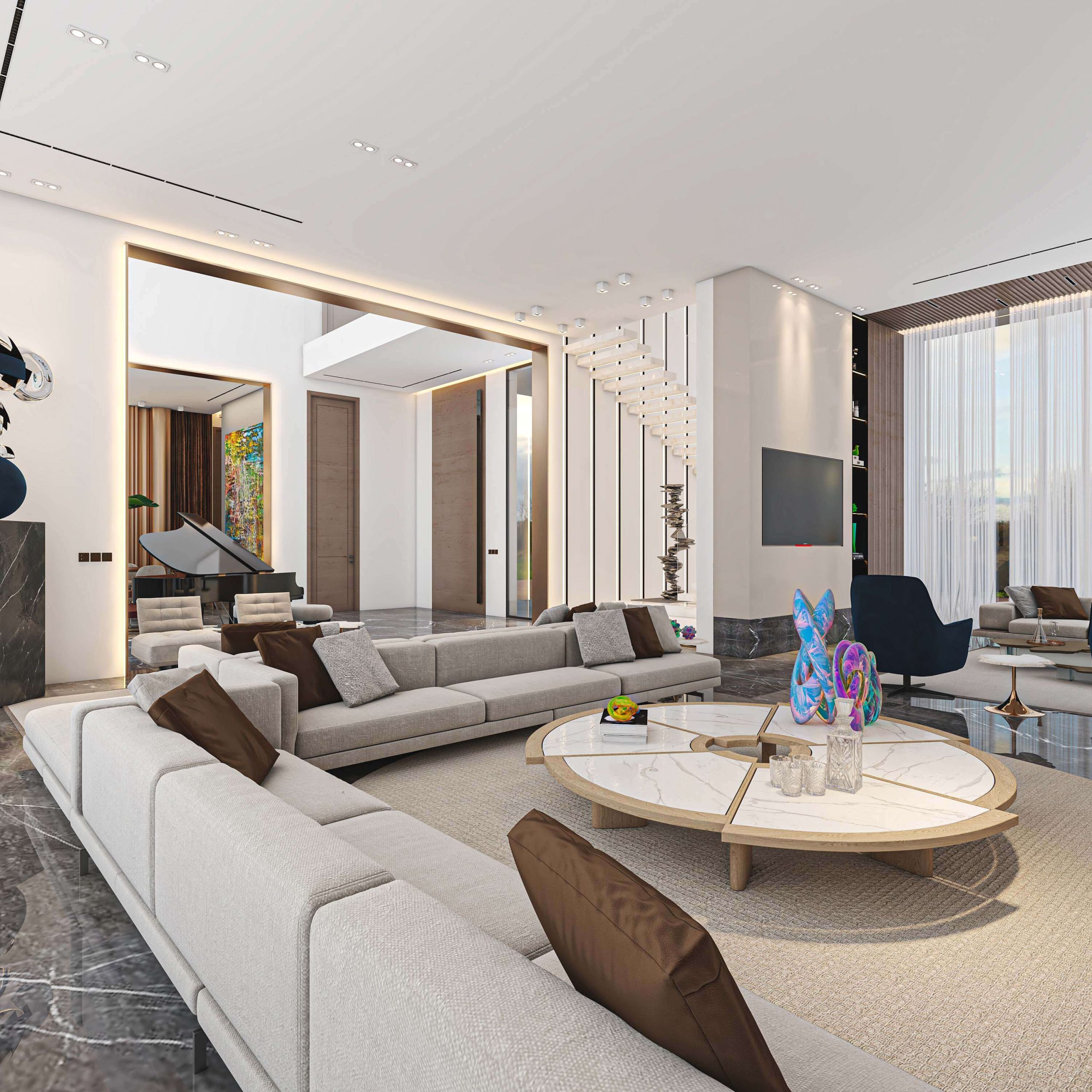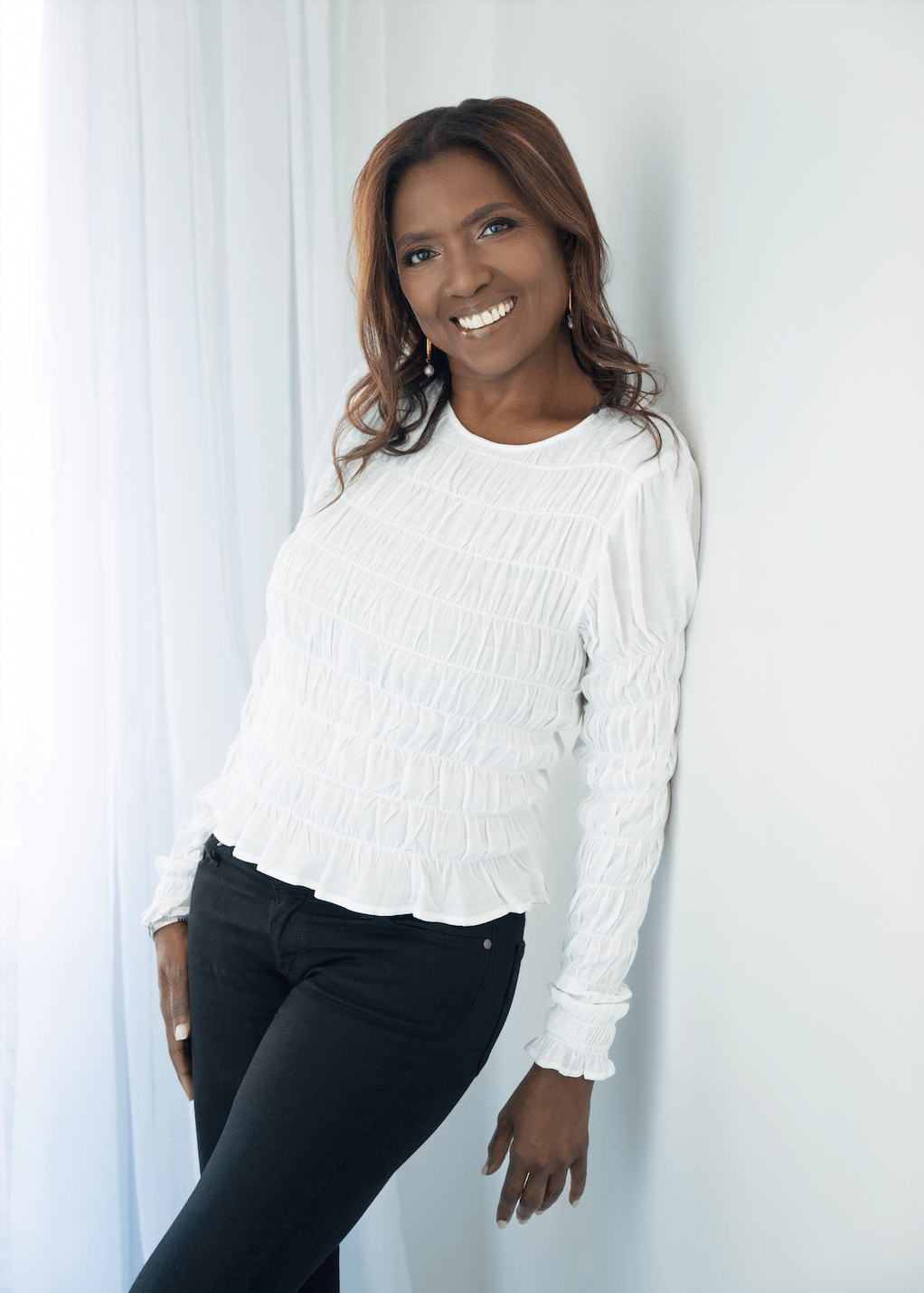Lifestyle
Round, Rectangular, or Ragged: Interior Architect Aly Hammoud and Choosing the Perfect Coffee Table

Saying “yes” to the right coffee table never gets any easier. An essential element of any well-thought-out living room, the choice often comes down to finding the right balance between form and function. Regardless of the designer’s direction with their space, choosing the right coffee table is a critical step toward achieving a cohesive and visually appealing interior design.
Designers must consider several factors when choosing a coffee table. First, the table size should be proportional to the size of the living room. A small coffee table in a large room will look out of place, and a large table in a small room will overwhelm the space. The table’s height is just as important. The ideal height typically falls between 16 and 18 inches, the same as most sofas. A coffee table that is too high or too low will prove uncomfortable for everyday use.

Designers must also consider shape, style, color, material, and space awareness. The table should complement the architecture of the room.
For example, round coffee tables are ideal for square rooms because they create contrast. It’s also important to consider the shape of the furniture, specifically the edges. A round coffee table would be an ideal fit for a living room where the sofa’s edges are also rounded.
The contrast in shapes, however, must be paired with coherence in materials. For example, if the furniture is made from mahogany wood, the table should reflect similar materials and hues. Different materials can be incorporated if the furniture contains metallic elements while considering the room’s overall coherence.
Space awareness is also essential to consider when choosing your coffee table. For instance, rectangular tables fit better in longer and narrower rooms because they don’t take up as much space as round or ragged tables. Suppose your room is spacious and wide enough. In that case, especially if it were an open studio, you can easily fit in round or ragged coffee tables, which are typically more challenging to style and arrange in certain spaces.

Most of the time, the table should match the space’s overall aesthetic. However, mixing elements and styles can help achieve a more dynamic finished product. Consider incorporating a mid-century coffee table in a room with more contemporary pieces or vice versa.
Ragged tables, however, are more sophisticated art pieces. Such tables don’t have a conventional shape, size, color, or edges. They can also have different and unique color patterns that must be mixed and matched professionally with your room’s overall aesthetic.
Of course, you can pick any type of coffee table that suits your needs and preferences in style and aesthetic. You need to make sure, however, that it is the ideal fit for the chosen room, furniture, style, and design. One way to do that is by choosing the right person for the job.

Coffee tables are an essential part of interior architecture. Not only do they function as practical surfaces for drinks and snacks, but they also contribute to the space’s general mood. Interior architects like Aly Hammoud understand coffee tables as powerful tools for tying a room together. They can create a focal point or complement other furniture pieces in the space.
Whether professional or amateur, the right designer should choose the coffee table carefully to ensure it fits seamlessly into the room’s overall design.
Check out Aly Hammoud’s Instagram account for more information.
Lifestyle
Wanda Knight on Blending Culture, Style, and Leadership Through Travel

The best lessons in leadership do not always come from a classroom or a boardroom. Sometimes they come from a crowded market in a foreign city, a train ride through unfamiliar landscapes, or a quiet conversation with someone whose life looks very different from your own.
Wanda Knight has built her career in enterprise sales and leadership for more than three decades, working with some of the world’s largest companies and guiding teams through constant change. But ask her what shaped her most, and she will point not just to her professional milestones but to the way travel has expanded her perspective. With 38 countries visited and more on the horizon, her worldview has been formed as much by her passport as by her resume.
Travel entered her life early. Her parents valued exploration, and before she began college, she had already lived in Italy. That experience, stepping into a different culture at such a young age, left a lasting impression. It showed her that the world was much bigger than the environment she grew up in and that adaptability was not just useful, it was necessary. Those early lessons of curiosity and openness would later shape the way she led in business.
Sales, at its core, is about connection. Numbers matter, but relationships determine long-term success. Wanda’s time abroad taught her how to connect across differences. Navigating unfamiliar places and adjusting to environments that operated on different expectations gave her the patience and awareness to understand people first, and business second. That approach carried over into leadership, where she built a reputation for giving her teams the space to take ownership while standing firmly behind them when it mattered most.
The link between travel and leadership becomes even clearer in moments of challenge. Unfamiliar settings require flexibility, quick decision-making, and the ability to stay calm under pressure. The same skills are critical in enterprise sales, where strategies shift quickly and no deal is ever guaranteed. Knight learned that success comes from being willing to step into the unknown, whether that means exploring a new country or taking on a leadership role she had not originally planned to pursue.
Her travels have also influenced her eye for style and her creative pursuits. Fashion, for Wanda, is more than clothing; it is a reflection of culture, history, and identity. Experiencing how different communities express themselves, from the craftsmanship of Italian textiles to the energy of street style in cities around the world, has deepened her appreciation for aesthetics as a form of storytelling. Rather than keeping her professional and personal worlds separate, she has learned to blend them, carrying the discipline and strategy of her sales career into her creative interests and vice versa.
None of this has been about starting over. It has been about adding layers, expanding her perspective without erasing the experiences that came before. Wanda’s story is not one of leaving a career behind but of integrating all the parts of who she is: a leader shaped by high-stakes business, a traveler shaped by global culture, and a creative voice learning to merge both worlds.
What stands out most is how she continues to approach both leadership and life with the same curiosity that first took her beyond her comfort zone. Each new country is an opportunity to learn, just as each new role has been a chance to grow. For those looking at her path, the lesson is clear: leadership is not about staying in one lane; it is about collecting experiences that teach you how to see, how to adapt, and how to connect.
As she looks to the future, Wanda Knight’s compass still points outward. She will keep adding stamps to her passport, finding inspiration in new cultures, and carrying those insights back into the rooms where strategy is shaped and decisions are made. Her legacy will not be measured only by deals closed or positions held but by the perspective she brought, and the way she showed that leading with a global view can change the story for everyone around you.
-

 Tech5 years ago
Tech5 years agoEffuel Reviews (2021) – Effuel ECO OBD2 Saves Fuel, and Reduce Gas Cost? Effuel Customer Reviews
-

 Tech6 years ago
Tech6 years agoBosch Power Tools India Launches ‘Cordless Matlab Bosch’ Campaign to Demonstrate the Power of Cordless
-

 Lifestyle6 years ago
Lifestyle6 years agoCatholic Cases App brings Church’s Moral Teachings to Androids and iPhones
-

 Lifestyle5 years ago
Lifestyle5 years agoEast Side Hype x Billionaire Boys Club. Hottest New Streetwear Releases in Utah.
-

 Tech7 years ago
Tech7 years agoCloud Buyers & Investors to Profit in the Future
-

 Lifestyle5 years ago
Lifestyle5 years agoThe Midas of Cosmetic Dermatology: Dr. Simon Ourian
-

 Health7 years ago
Health7 years agoCBDistillery Review: Is it a scam?
-

 Entertainment6 years ago
Entertainment6 years agoAvengers Endgame now Available on 123Movies for Download & Streaming for Free
